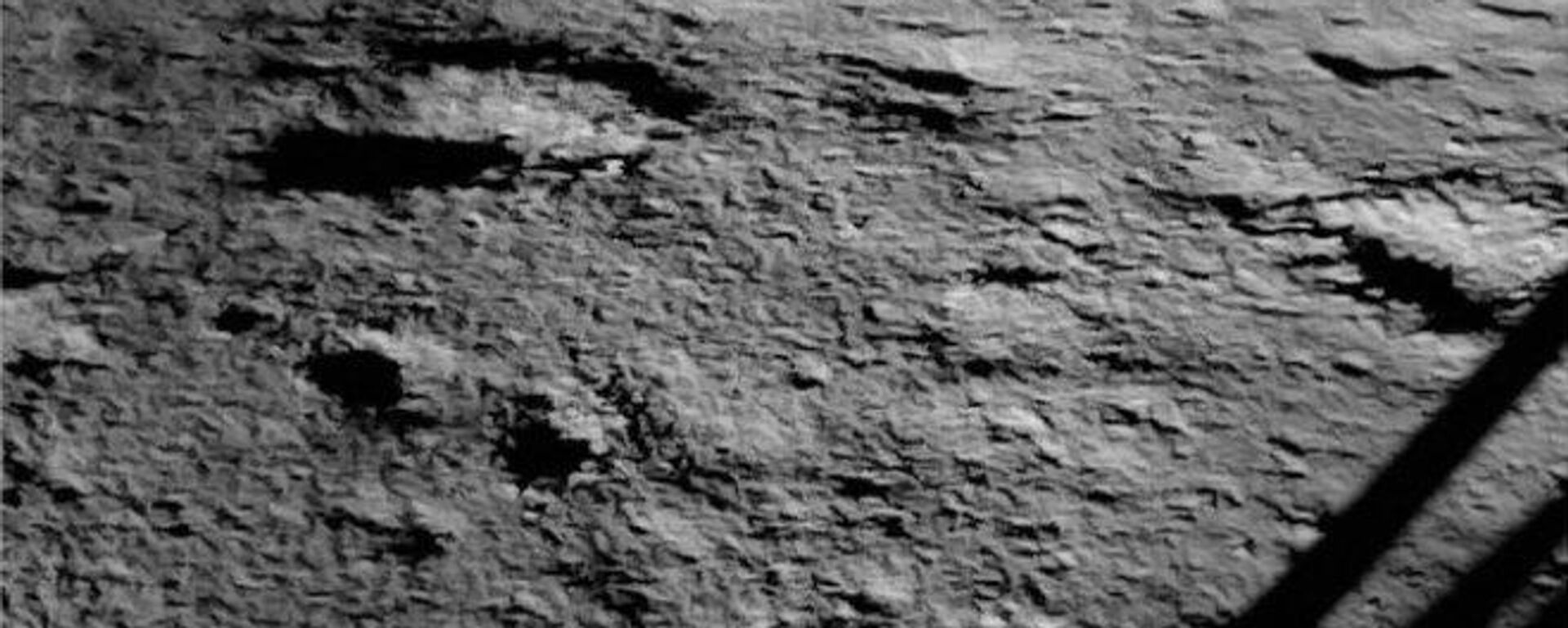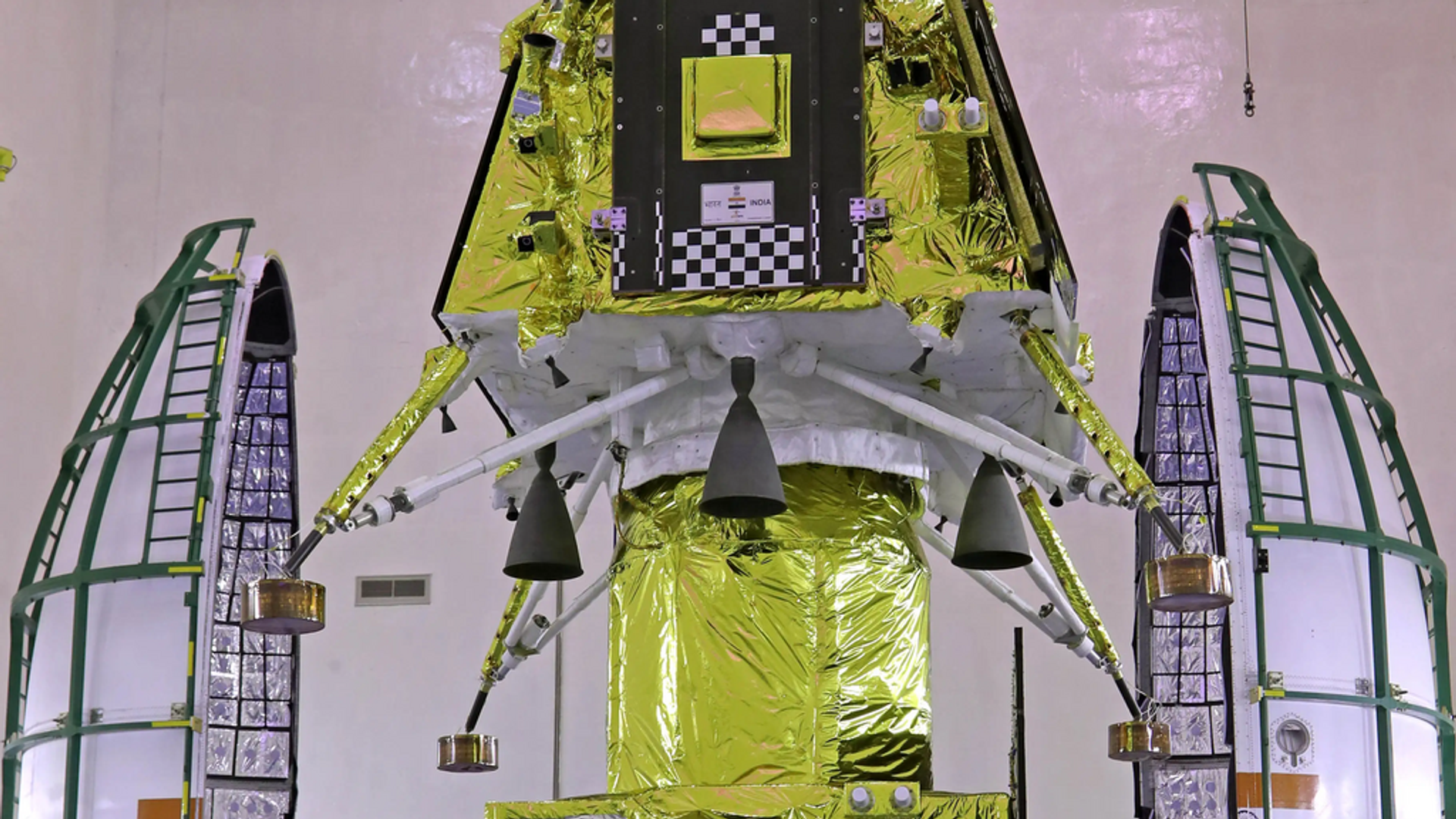https://sputnikglobe.com/20230923/indian-space-rover-lander-have-yet-to-awaken-after-enduring-cold-lunar-night-1113598145.html
Indian Space Rover, Lander Have Yet to Awaken After Enduring Cold Lunar Night
Indian Space Rover, Lander Have Yet to Awaken After Enduring Cold Lunar Night
Sputnik International
India's Chandrayaan-3 mission is in danger of concluding after its lander and rover have so far failed to wake up following the long lunar night.
2023-09-23T03:34+0000
2023-09-23T03:34+0000
2023-09-23T03:32+0000
beyond politics
science & tech
indian space research organization (isro)
moon
moon mission
moon landing
chandrayaan-3
https://cdn1.img.sputnikglobe.com/img/07e7/08/16/1112793445_0:386:1024:962_1920x0_80_0_0_02c315f841e2118118b8a29e0c900ca6.png
The Indian Space Research Organization (ISRO) has not received any communications from the Vikram lander or Pragyan rover it landed on the moon as part of its Chandrayaan-3 mission, after the two robotic space explorers turned off for the two-week-long lunar night.The lunar night is over for the part of the moon where Vikram and Pragyan were last seen, and as such is expected to have turned back on and send a message to the ISRO; however, that has not yet happened.The main mission of the Chandrayaan-3 explorers was to operate during the lunar day and then enter “sleep mode” in preparation for the lunar night. While they were both designed to turn back on once the sun hit their solar panels again, that was never guaranteed and would be considered a bonus for the ISRO. Still, officials expected the two devices would turn on at least one more time after their initial lunar night.That tweet, posted 13 hours ago at the time of this writing, has not been followed by an update.The ISRO launched the Chandrayaan-3 in July and landed the Vikram on August 23, which then sent out the Pragyan rover. Two weeks later, they shut off to prepare for the night and hoped they would turn back on around this time.The ISRO said they hoped they would turn back on, but cautioned the harsh environment would make that difficult.While there has been no word from Vikram or Pragyan yet, it is still possible they may wake up as the sun’s rays warm the devices up. “This sustained period of cold may have caused issues with the equipment, and it may take longer to warm up than was previously planned, especially if the rover is in the shadow of a boulder,” Sarah Casewell of the University of Leicester, UK, told a science-focused outlet.
https://sputnikglobe.com/20230824/india-shares-new-images-of-moons-south-pole-after-historic-chandrayaan-3-landing-1112832884.html
Sputnik International
feedback@sputniknews.com
+74956456601
MIA „Rossiya Segodnya“
2023
News
en_EN
Sputnik International
feedback@sputniknews.com
+74956456601
MIA „Rossiya Segodnya“
Sputnik International
feedback@sputniknews.com
+74956456601
MIA „Rossiya Segodnya“
vikram lander, pragyan rover, indian moon mission, indian moon rover, moon exploration, chandrayaan-3 mission
vikram lander, pragyan rover, indian moon mission, indian moon rover, moon exploration, chandrayaan-3 mission
Indian Space Rover, Lander Have Yet to Awaken After Enduring Cold Lunar Night
The Chandrayaan-3 mission was India’s first successful moon landing and the world’s first near the lunar south pole. India was the fourth nation to soft-land on (that is, not crash into) the moon, following the Soviet Union, United States and China.
The Indian Space Research Organization (ISRO) has not received any communications from the Vikram lander or Pragyan rover it landed on the moon as part of its Chandrayaan-3 mission, after the two robotic space explorers turned off for the two-week-long lunar night.
The lunar night is over for the part of the moon where Vikram and Pragyan were last seen, and as such is expected to have turned back on and send a message to the ISRO; however, that has not yet happened.
The main mission of the Chandrayaan-3 explorers was to operate during the lunar day and then enter “sleep mode” in preparation for the lunar night. While they were both designed to turn back on once the sun hit their solar panels again, that was never guaranteed and would be considered a bonus for the ISRO. Still, officials expected the two devices would turn on at least one more time after their initial lunar night.
On Friday, the ISRO tweeted “no signals have been received from [the Vikram or Pragyan]” but noted that “efforts to establish contact will continue.”
That
tweet, posted 13 hours ago at the time of this writing, has not been followed by an update.
Lunar nights feature extremely harsh conditions, especially at the poles, with temperatures dropping as low as negative 283 degrees Celsius (negative 396 degrees Fahrenheit). While low temperatures are generally good for electronics, extreme cold temperatures as those found on the moon or outer space, can actually damage electronic components as they expand and contract during temperature changes.
While electronics meant for space exploration are much hardier than consumer electronics on Earth, the extreme temperatures still present a challenge for engineers and scientists.

24 August 2023, 00:10 GMT
The ISRO launched the Chandrayaan-3 in July and landed the Vikram on August 23, which then sent out the Pragyan rover. Two weeks later, they shut off to prepare for the night and hoped they would turn back on around this time.
The ISRO said they hoped they would turn back on, but cautioned the harsh environment would make that difficult.
While there has been no word from Vikram or Pragyan yet, it is still possible they may wake up as the sun’s rays warm the devices up. “This sustained period of cold may have caused issues with the equipment, and it may take longer to warm up than was previously planned, especially if the rover is in the shadow of a boulder,” Sarah Casewell of the University of Leicester, UK, told a science-focused outlet.



